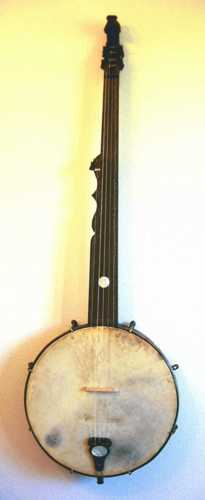
|
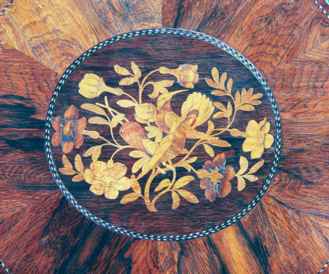
|
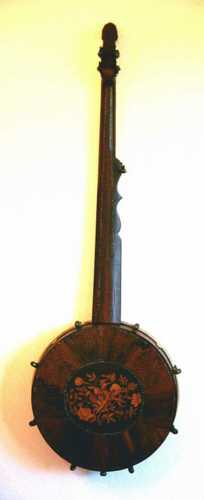
|
[Click on any picture for a more detailed view. Return with your browser's BACK button.]

|

|

|
The banjo has an average pot diameter of approximately
13 3/8".
The pot is 3 3/8" deep.
The scale length, using the end of the double ogee as
the octave, is 27 1/2"
which puts the bridge slightly above the center of the
pot.
The banjo came strung with very light steel strings and
a modern bridge
which was much too narrow for the fingerboard.
The tension hoop is steel. It is not appreciably
rusted and looks as though
it might have been silver plated. I have not polished
it.
5 of the original massive hooks and nuts remain.
Two are makeshift replacements and 1 is missing.
The original tailpiece was/is attached with modern nylon clear fishing line.
The Pot
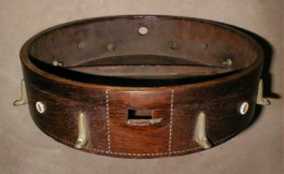
|
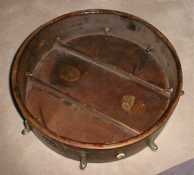
|
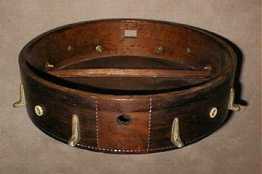
|
The Neck

|

|

|

|

|

|

|

|
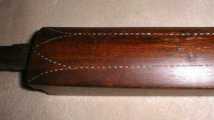
|
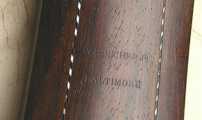
|
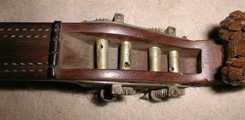
|

|
Unfortunately, the eagle's beak has been lost in the misty
past.
In the side view of the peghead it still retains its
piercing glare.
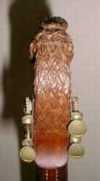 |
||
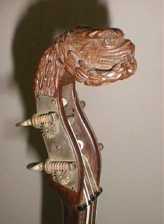 |
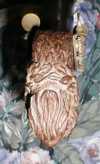 |
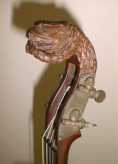 |
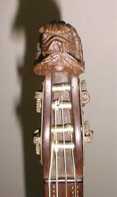 |
Labels and Hardware
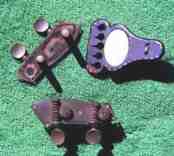
|
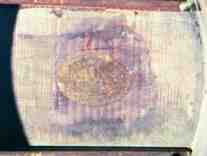
|
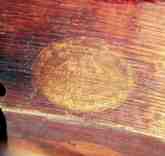
|
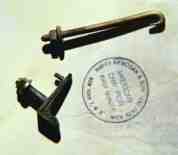
|
Three oval paper labels are attached to the inside of
the pot,
one to the inside wall and two to the bottom.
One of the bottom labels has badly decrepitated.
The legend on the label reads:
W. BOUCHER JR.
(print here of instruments: banjo, drum & sticks,
trumpet, violin & bow, horn?)
38 EAST BALTIMORE STR
ONE DOOR FROM
HIGH ST.
BALTIMORE
IMPORTER & MANUFACTURER OF
MUSICAL INSTRUMENTS
The geared pegs may be commercial violin machines of the
period
with the exception of the 5th peg gear.
The gear plates are unmarked brass.
The worms are steel; the buttons appear to be brass.
The sculptural circular gears appear to be brass, cast
onto steel shafts.
The large cast metal barrels are pinned to the rotating
shafts.
The fit of the gears is quite loose but they function perfectly under string tension.
In trying to determine a date of manufacture of the Boucher, Ed Britt told me that:
He was at 32 E Baltimore in 1850
Was at 38 in 1853 thru 1872
(But only labeled as a "maker" until 1859 -
by 1868 the word "maker" is NOT used - just "musical
instruments")
Is at 84 1/2 W. Baltimore in 1881
Ed also suggested, and I agree, that the carving of the
peghead is
an eagle with a laurel garland in its mouth.
Seeing the peghead - it appears to be an eagle's head,
holding a laurel
garland. A typical motif for the time - which
would ALSO tend to place it
more in the '60's!
--> I welcome any and all suggestions about date of manufacture.
Please address any comments or requests for more information
to
Hank Schwartz
Entire contents of this page ©HSD 2000